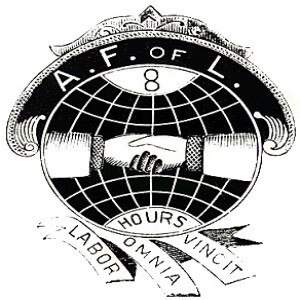
- Podcast Features
-
Monetization
-
Ads Marketplace
Join Ads Marketplace to earn through podcast sponsorships.
-
PodAds
Manage your ads with dynamic ad insertion capability.
-
Apple Podcasts Subscriptions Integration
Monetize with Apple Podcasts Subscriptions via Podbean.
-
Live Streaming
Earn rewards and recurring income from Fan Club membership.
-
Ads Marketplace
- Podbean App
-
Help and Support
-
Help Center
Get the answers and support you need.
-
Podbean Academy
Resources and guides to launch, grow, and monetize podcast.
-
Podbean Blog
Stay updated with the latest podcasting tips and trends.
-
What’s New
Check out our newest and recently released features!
-
Podcasting Smarter
Podcast interviews, best practices, and helpful tips.
-
Help Center
-
Popular Topics
-
How to Start a Podcast
The step-by-step guide to start your own podcast.
-
How to Start a Live Podcast
Create the best live podcast and engage your audience.
-
How to Monetize a Podcast
Tips on making the decision to monetize your podcast.
-
How to Promote Your Podcast
The best ways to get more eyes and ears on your podcast.
-
Podcast Advertising 101
Everything you need to know about podcast advertising.
-
Mobile Podcast Recording Guide
The ultimate guide to recording a podcast on your phone.
-
How to Use Group Recording
Steps to set up and use group recording in the Podbean app.
-
How to Start a Podcast
-
Podcasting
- Podcast Features
-
Monetization
-
Ads Marketplace
Join Ads Marketplace to earn through podcast sponsorships.
-
PodAds
Manage your ads with dynamic ad insertion capability.
-
Apple Podcasts Subscriptions Integration
Monetize with Apple Podcasts Subscriptions via Podbean.
-
Live Streaming
Earn rewards and recurring income from Fan Club membership.
-
Ads Marketplace
- Podbean App
- Advertisers
- Enterprise
- Pricing
-
Resources
-
Help and Support
-
Help Center
Get the answers and support you need.
-
Podbean Academy
Resources and guides to launch, grow, and monetize podcast.
-
Podbean Blog
Stay updated with the latest podcasting tips and trends.
-
What’s New
Check out our newest and recently released features!
-
Podcasting Smarter
Podcast interviews, best practices, and helpful tips.
-
Help Center
-
Popular Topics
-
How to Start a Podcast
The step-by-step guide to start your own podcast.
-
How to Start a Live Podcast
Create the best live podcast and engage your audience.
-
How to Monetize a Podcast
Tips on making the decision to monetize your podcast.
-
How to Promote Your Podcast
The best ways to get more eyes and ears on your podcast.
-
Podcast Advertising 101
Everything you need to know about podcast advertising.
-
Mobile Podcast Recording Guide
The ultimate guide to recording a podcast on your phone.
-
How to Use Group Recording
Steps to set up and use group recording in the Podbean app.
-
How to Start a Podcast
-
Help and Support
- Discover

On this day in labor history, the year was 1886.
That was the day thirty-eight tradesmen met in Columbus, Ohio to found the American Federation of Labor.
There was an urgent need to form a new national organization for skilled workers.
The Knights of Labor had organized workers regardless of skill.
They included women and African-Americans among their ranks.
But they were rocked by a sharp and swift decline that year.
There was an anti-labor backlash after the Haymarket incident the previous spring.
Many tradesmen were looking to form a different kind of federation than the Knights had offered.
Julie Greene, author of Pure and Simple Politics, states the new AFL differed from the Knights of Labor on three core issues:
First, these trade unionists were less concerned with the broad social reforms the Knights promoted.
Instead, they wanted to work towards the economic concerns of their members.
They didn’t like the mixed assemblies the Knights insisted upon, which often included nonworkers.
Second, craftsmen hoped for full autonomy of the trade unions within a loose federation.
They didn’t like the centralized structure of the Knights and the dominant role Terrance Powderly played.
Finally, they didn’t like the jurisdictional subordination the Knights subjected the trade unions to.
They elected Samuel Gompers of the Cigar Makers International Union as their first president, who served until his death in 1924.
The early AFL reflected many of the Knight’s traditions, including industrial unions and socialist politics.
They fought for injunction reform and the eight-hour day.
Within fifteen years, the AFL would grow to represent millions in predominantly white, skilled craft unions that embodied business unionism.
In 1935 demands for industrial organizing would split the house of labor and the AFL.
More Episodes
 2025-07-01
2025-07-01
 2025-06-30
2025-06-30
 2025-06-27
2025-06-27
 2025-06-26
2025-06-26
 2025-06-24
2025-06-24
 2025-06-23
2025-06-23
 2025-06-22
2025-06-22
 2025-06-21
2025-06-21
 2025-06-20
2025-06-20
 2025-06-19
2025-06-19
 2025-06-18
2025-06-18
 2025-06-17
2025-06-17
 2025-06-16
2025-06-16
 2025-06-16
2025-06-16
 2025-06-14
2025-06-14
 2025-06-13
2025-06-13
 2025-06-12
2025-06-12
Create your
podcast in
minutes
- Full-featured podcast site
- Unlimited storage and bandwidth
- Comprehensive podcast stats
- Distribute to Apple Podcasts, Spotify, and more
- Make money with your podcast
It is Free
- Privacy Policy
- Cookie Policy
- Terms of Use
- Consent Preferences
- Copyright © 2015-2025 Podbean.com


